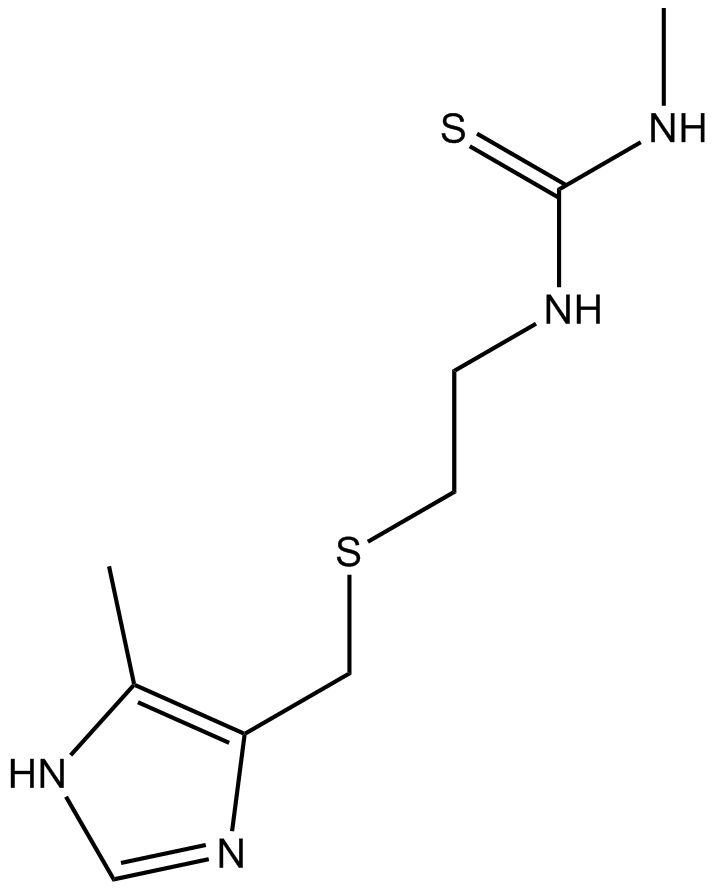Metiamide |
| Catalog No.GC13024 |
Products are for research use only. Not for human use. We do not sell to patients.

Cas No.: 34839-70-8
Sample solution is provided at 25 µL, 10mM.
Metiamide is a high-selective and oral bioavailable antagonist of histamine H2-receptor with ED50 value of 25 μmol/kg [1].
Unlike the traditional antihistaminics which are H1-receptor antagonists, metiamide is an antagonist of H2-receptor. It is developed from burimamide which is a previously found antagonist of H2-receptor. Metiamide acts as a competitive antagonist and blocks the combination of histamine and its receptor. This blockade results in the inhibition of gastric acid secretion stimulated by histamine and other hormone such as pentagastrin and gastrin. Compared with burimamide, metiamide showed higher activity and good oral bioavailability [1 and 2].
In the in vitro assays, metiamide displayed about 10-fold higher activity than burimamide on rat uterine muscle and guinea-pig heart muscle with Kb values of 0.75 and 0.92 μM, respectively. The Kb value of burimamide on the atrial muscle was 7.8 μM. Besides that, metiamide showed no efficacy on H1-receptor and isoprenaline even at the concentration of 1 mM suggested that metiamide was also a selective antagonist. Moreover, metiamide was found to cause increase in chemokinesis and random migration in PMN cells similar to histamine. It was different that metiamide had no effects on the true chemotaxis whereas histamine significantly suppressed the chemotaxis, which demonstrated histamine affected neutrophil motility through the H2-receptor site [1 and 3].
In dogs, the administration of metiamide inhibited acid secretion stimulated by histamine from both the Heidenhain pouch and the gastric fistula. It also inhibited acid secretion stimulated by pentagastrin and liver extract from both the Heidenhain pouch and the main stomach. When metiamide was given by intravenous injection, the doses of it to cause 50% inhibition of the maximal histamine- and pentagastrin-stimulated acid secretion were 3.1 and 6.1 μmol/kg. When metiamide was given by oral administration, the ED50 value of it to cause inhibition was 16 μmol/kg [1 and 2].
References:
[1] Black J W, Duncan W A M, Emmett J C, et al. Metiamide—an orally active histamine H2-receptor antagonist. Agents and Actions, 1973, 3(3): 133-137.
[2] Grossman M I, Konturek S J. Inhibition of acid secretion in dog by metiamide, a histamine antagonist acting on H2 receptors. Gastroenterology, 1974, 66(4): 517-521.
[3] Anderson R, Glover A, Rabson A R. The in vitro effects of histamine and metiamide on neutrophil motility and their relationship to intracellular cyclic nucleotide levels. The Journal of Immunology, 1977, 118(5): 1690-1696.
Average Rating: 5 (Based on Reviews and 30 reference(s) in Google Scholar.)
GLPBIO products are for RESEARCH USE ONLY. Please make sure your review or question is research based.
Required fields are marked with *




















